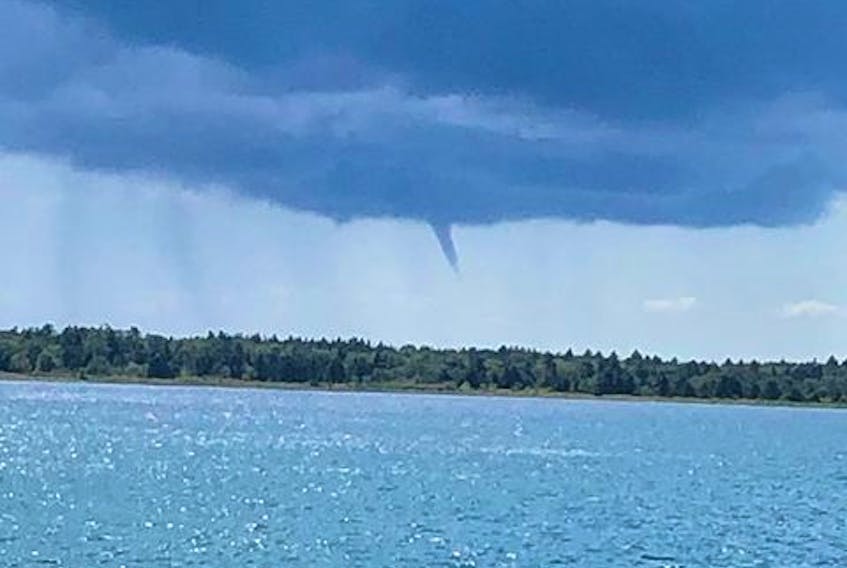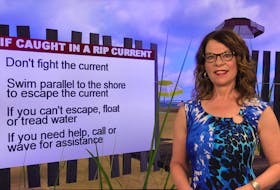I wrote Tuesday’s weather column minutes before my deadline, after receiving some pretty cool video of a waterspout dancing on the water just off the coast of Stephenville NL. Steve Angel was kind enough to share the rare, but fascinating, site with us.
Then yesterday, this email came from Stephen Majella:
“In reference to your suggestion ‘the best way to avoid a waterspout is to move at a 90-degree angle to its apparent movement,’ why not move a 180-degree direction? Wouldn’t that get you further away in an opposite direction?”
I’m glad you asked Stephen. I should have taken a moment to explain.
These spiralling funnels usually develop with the help of some kind of mechanical lift. A trough or frontal line would fit the bill. In the northern hemisphere, these systems generally travel from west to east. Waterspouts that develop on the leading edge of a lift-line would also be travelling from west to east or sometimes along the trough with a more southwest to northeast movement.

If you were in a boat and spotted a waterspout, the first thing to do is gauge its apparent direction. Once you’ve figured that out, you should move away at a 90-degree angle; so, if the waterspout is heading east, head south.
Here’s why: The most obvious reason is that an angle with a measure of 180 degrees is a straight angle; you’d be heading back through the line of weather.
Meteorologically, a spiralling storm like a waterspout remains attached to the dynamic region that gave it life. The funnel will likely either continue to track along the trough from west to east and future funnels are likely to develop and track up the spine of the weather line in a southwest to northeast direction. So, if it's heading east, drive to the south.
I’ve heard people say waterspouts are harmless. Waterspouts can be harmless as long as you understand and avoid them. If you live along the coast, you should treat all waterspouts as you would tornadoes on land and assume they might come ashore.
- Want more weather information? Visit your weather page.
- Have a weather question, photo or drawing to share with Cindy Day? Email [email protected]
Cindy Day is the chief meteorologist for SaltWire Network









